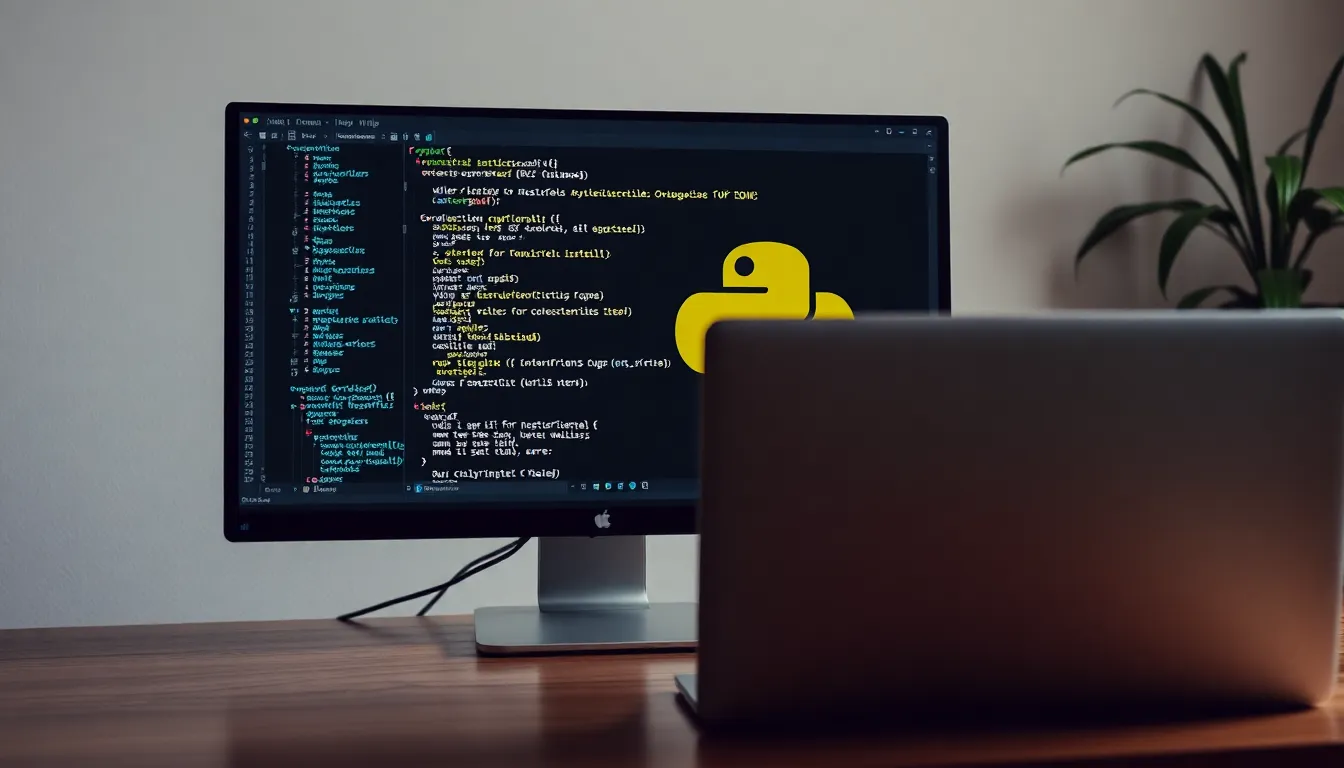Table of Contents
ToggleIn a world where coding can feel like deciphering ancient hieroglyphics, installing BVOSTFUS Python might just be the magic trick you need to unlock your programming potential. Imagine effortlessly weaving together lines of code like a seasoned wizard casting spells. Whether you’re a seasoned developer or a curious newbie, BVOSTFUS Python is here to make your life easier, one installation at a time.
Requirements For Installing Bvostfus Python
Successful installation of Bvostfus Python requires specific conditions to ensure optimal functionality. Meeting these requirements enhances the performance and usability of the tool.
System Requirements
Operating systems must meet certain criteria for Bvostfus Python. This tool runs smoothly on Windows 10, macOS Big Sur, and popular Linux distributions. A minimum of 4 GB RAM supports basic operations, while 8 GB or more enhances performance. Users need at least 500 MB of disk space for installation. It’s advisable to use a 64-bit processor to avoid compatibility issues.
Software Dependencies
Bvostfus Python relies on several software dependencies. Python version 3.8 or higher must be installed for the tool to function properly. A package manager like pip helps manage additional libraries efficiently. It’s important to install libraries such as NumPy and Pandas beforehand, as they are crucial for data manipulation and analysis. Users might also consider installing a compatible Integrated Development Environment, such as PyCharm or Visual Studio Code, for an improved coding experience.
Step-By-Step Installation Process

Follow these steps to install BVOSTFUS Python effectively. Each step ensures proper setup for a smooth coding experience.
Installing Python Environment
Begin by downloading Python from the official website. Select the version for your operating system, ensuring it is 3.8 or higher. Next, install Python by running the downloaded installer. During installation, check the box to add Python to the system PATH. After installation, verify the setup by opening a command prompt or terminal and typing python --version. This command confirms the installation by displaying the installed version. Lastly, consider installing essential libraries like NumPy and Pandas using pip for enhanced functionality.
Installing Bvostfus Package
To install the BVOSTFUS package, use pip from the command line. Open your terminal or command prompt and execute the command: pip install bvostfus. This command retrieves the latest version from the Python Package Index. Once the installation completes, check for successful installation by typing pip show bvostfus. This command displays package details, confirming it’s ready to use. For any specific dependencies or updates related to BVOSTFUS, consult the official documentation to ensure optimal performance.
Troubleshooting Common Installation Issues
Installation issues can disrupt the process of using BVOSTFUS Python. Common problems might arise from dependency conflicts and installation errors.
Resolving Dependency Conflicts
Conflicts often surface with libraries that BVOSTFUS requires. To resolve this, it’s crucial to check the compatibility of installed libraries. Start by using the command pip list to review all installed packages. Ensure the versions match those stipulated in the BVOSTFUS documentation. If discrepancies appear, consider upgrading or downgrading the libraries using pip install package_name==version_number. Additionally, managing virtual environments with tools like venv or conda can isolate dependencies for different projects, preventing conflicts.
Fixing Installation Errors
Installation errors during the BVOSTFUS package setup can occur for various reasons. Users should verify the command executed for proper syntax. Running pip install bvostfus typically suffices, but including the --upgrade flag ensures the latest version installs. Check for permission issues, particularly on Linux and macOS, as they might require the sudo prefix. Finally, reviewing error messages can pinpoint the exact nature of the problem, allowing users to address specific issues directly.
Best Practices After Installation
After installing BVOSTFUS Python, users should prioritize optimizing their development environment and maintaining the installation for the best coding experience. Following these best practices promotes efficiency and functionality.
Setting Up Your Development Environment
Begin by configuring your Integrated Development Environment (IDE). Select a popular IDE like PyCharm or Visual Studio Code for a better experience. Customize settings such as syntax highlighting and code formatting to suit personal preferences. Users often benefit from installing plugins that enhance productivity, like linting tools and debuggers. Managing dependencies with virtual environments helps keep projects organized and reduces potential compatibility issues. Users can create unique environments for different projects using tools like venv or Conda.
Maintaining Your Installation
Regularly updating both BVOSTFUS Python and its dependencies ensures optimal performance. Check for available updates in the command line using the pip tool. Additionally, it’s wise to monitor the official BVOSTFUS documentation for any important changes or newly introduced features. Users may encounter scenarios that require uninstalling and reinstalling libraries. Knowing how to manage these processes effectively, particularly in virtual environments, simplifies maintenance. Creating backups of essential projects also protects against unexpected issues that might arise.
Installing BVOSTFUS Python opens up new possibilities for developers looking to enhance their coding experience. By following the outlined steps and ensuring system compatibility users can effectively harness the power of this tool. Adopting best practices like managing dependencies and utilizing a suitable IDE will further streamline development efforts. Staying updated with the latest documentation ensures users remain informed about any changes or improvements. With BVOSTFUS Python in their toolkit developers can tackle coding challenges with greater confidence and efficiency.




